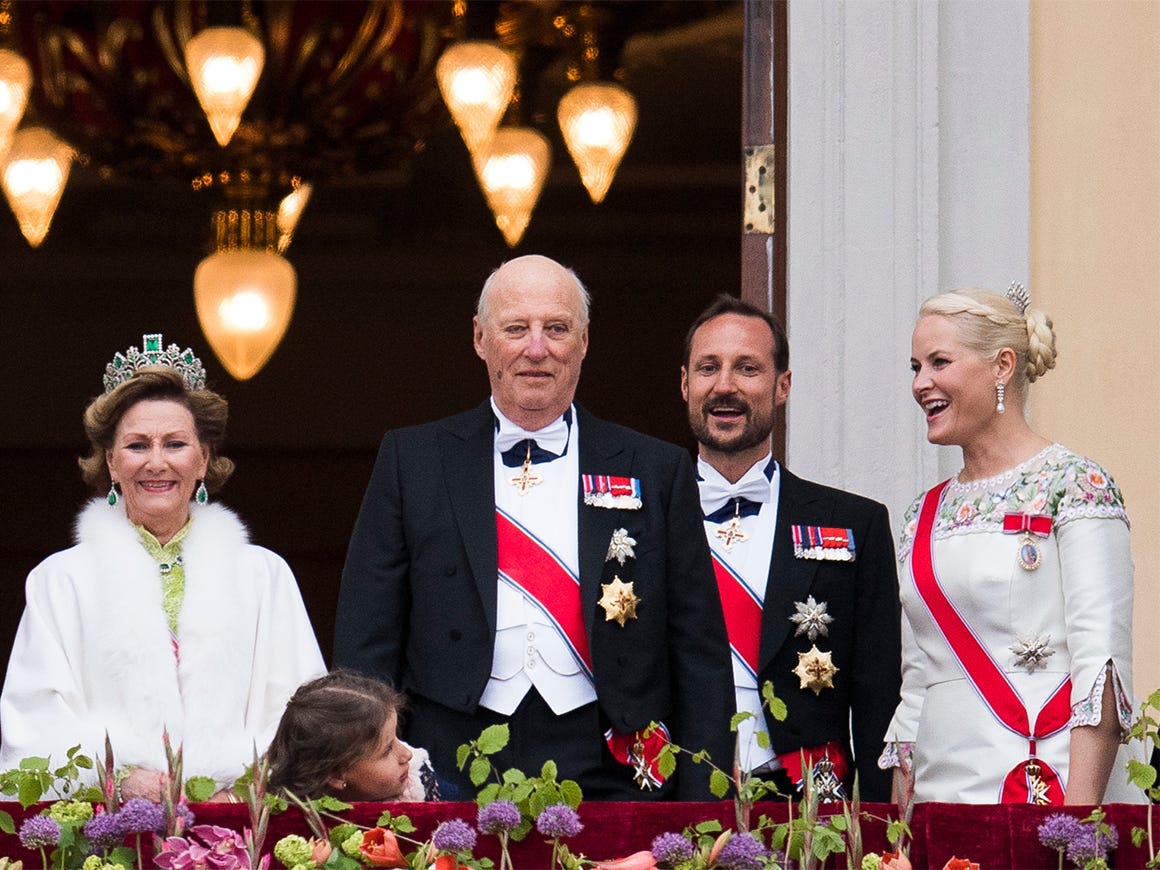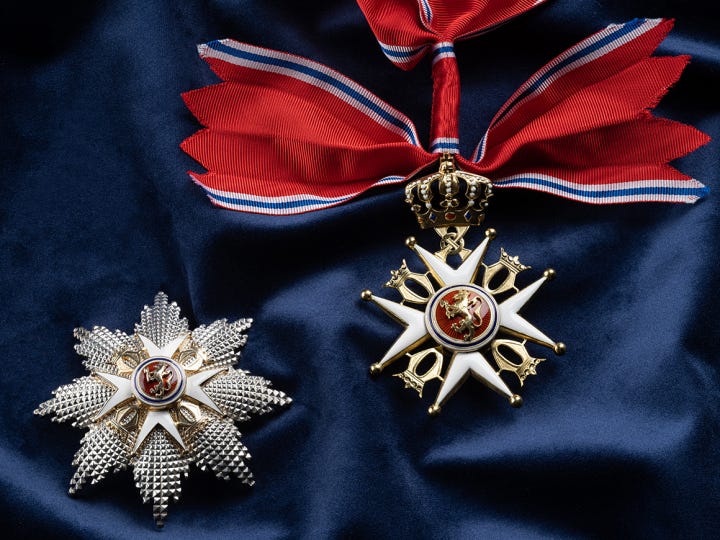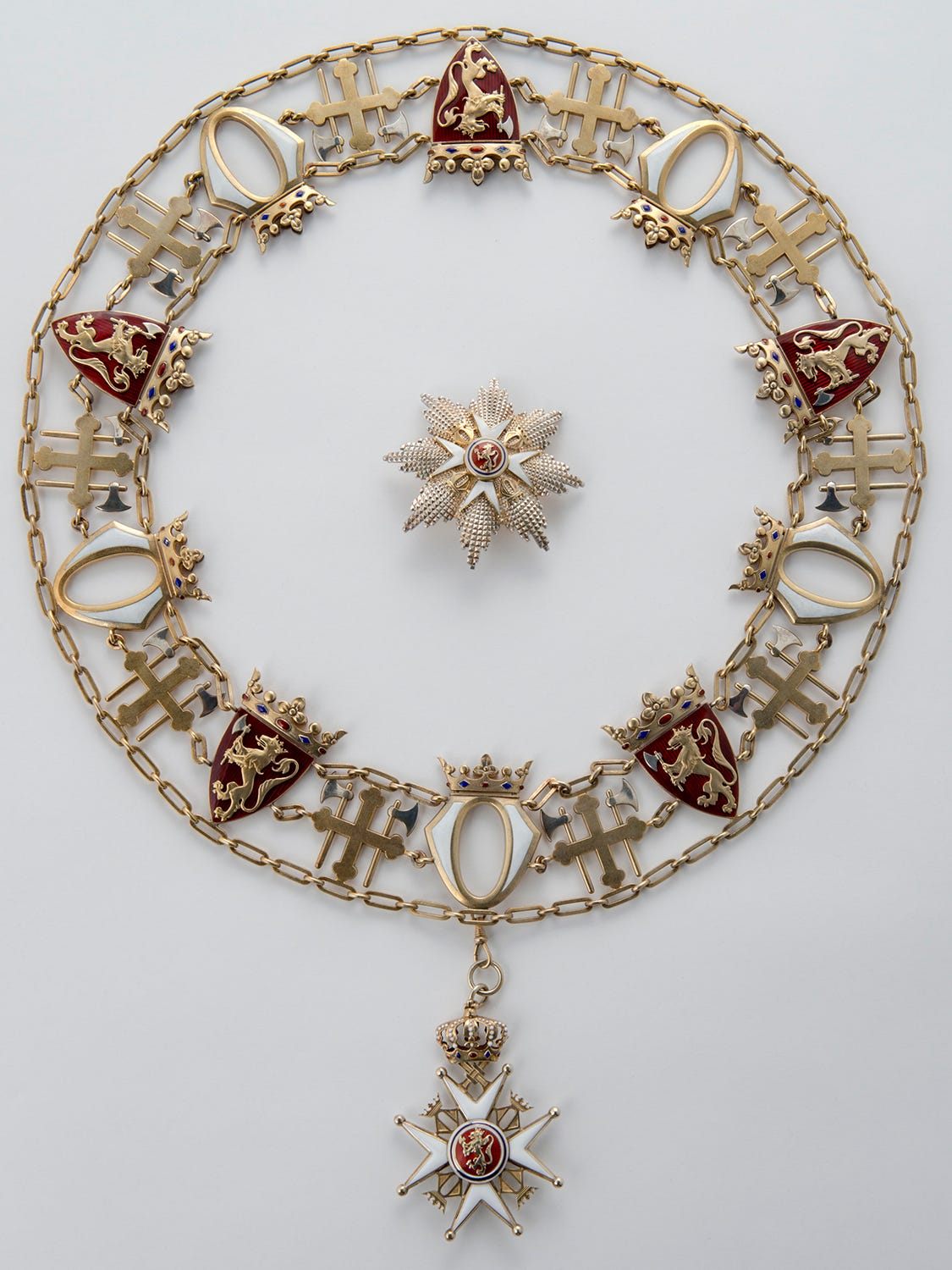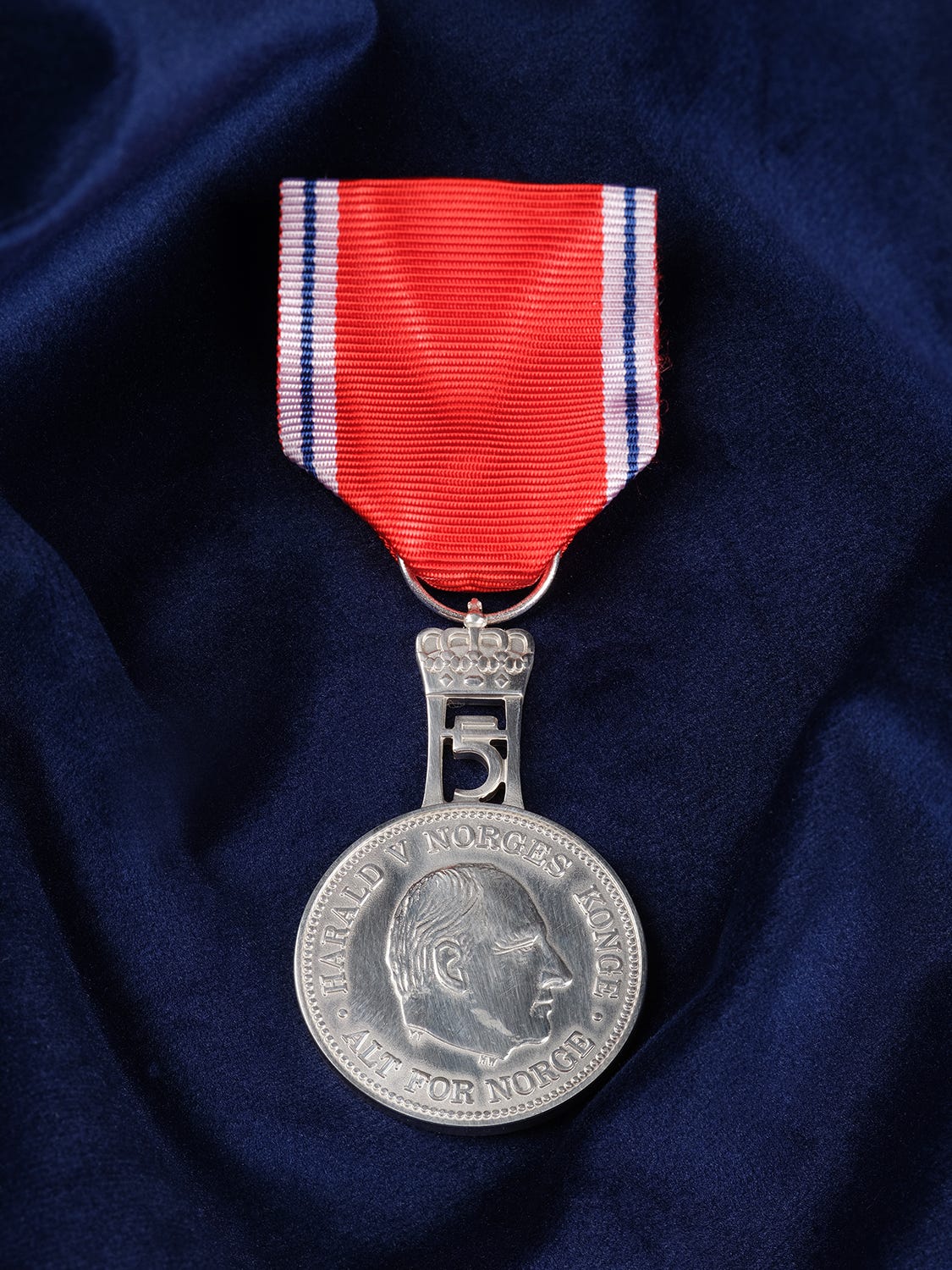The Royal Orders and Medals of Norway: The Kingdom’s Narrative in the 21st Century
Dive into Norway’s rich tapestry of honor! Explore the prestigious orders and medals, from Saint Olav to modern merits, celebrating service and unity in this captivating finale of our royal series!
In the first two installments of this three-part series, The Monarchs of the North: Norway’s Thousand-Year Royal Journey traced the epic saga of Norway’s monarchy from the Viking-age unification under Harald Fairhair to the pivotal moment of independence in 1905, when Haakon VII stepped ashore to reclaim a native throne.
The second article, Norway’s Modern Monarch: How King Harald V Shaped Contemporary Norway, illuminated how King Harald V, through his warmth, humility, and inclusive vision, has anchored the monarchy as a unifying symbol in a modern, egalitarian nation.
This final chapter completes the trilogy by exploring the illustrious Chivalric Orders and Medals of Norway—prestigious honors that embody the kingdom’s values of service, integrity, and excellence. These Orders, honours, and decorations, bestowed by the monarchy, bridge Norway’s ancient royal heritage with its contemporary identity, celebrating individuals who shape the nation’s story while reinforcing its cultural and moral foundations.
Norway’s system of honors demonstrates the monarchy’s enduring role in public life and reflects the kingdom’s commitment to acknowledging dedication and excellence at every level of society.
Prominent among these distinctions are the Royal Norwegian Order of St. Olav, the Royal Norwegian Order of Merit, the Medal of St. Olav, the King's Medal of Merit, the H.M. King’s Commemorative Medal, and the historical and dormant, yet significant Order of the Norwegian Lion.
Whether conferred in the grandeur of Oslo’s Royal Palace or a modest town hall, each honor carries the weight of history, connecting recipients to a lineage that stretches back to the saga-laden days of Viking kings. In a nation that prizes humility and equality, these decorations are not mere ornaments but profound expressions of gratitude, carefully bestowed to inspire and unite.
This article delves into the history, symbolism, and impact of Norway’s orders and medals, revealing how they continue to shape the kingdom’s narrative in the 21st century.
The Royal Norwegian Order of Saint Olav
The Royal Norwegian Order of Saint Olav, or Den Kongelige Norske Sankt Olavs Orden, established on 21 August 1847 by King Oscar I, stands as Norway’s premier chivalric honor. Named for Saint Olav II Haraldsson, the martyr king whose death at the Battle of Stiklestad in 1030 cemented Christianity in Norway, as detailed in our first article, the order embodies the nation’s spiritual and historical roots. King Harald V, as Grand Master, presides over its conferment, continuing a tradition that has defined Norwegian identity since the 19th century.
Instituted during the union with Sweden, the Order of Saint Olav was initially a tool to bolster national pride at a time when Norway’s sovereignty was constrained, as described in the first article’s account of the Kalmar Union and subsequent Danish and Swedish rule.
After the dissolution of the union with Sweden in 1905, the Order became the cornerstone of Norway’s independent honors system, symbolizing the reassertion of a native monarchy under Haakon VII. Its motto, 'Ret og Sandhed' or 'Justice and Truth,' reflects the ideals that have guided Norway’s monarchs, from Saint Olav’s unification efforts to King Harald V’s commitment to inclusivity and compassion, as highlighted in the second article.
The insignia of the Order is a white-enamelled Maltese cross in gold. At its centre lies a crimson medallion, encircled by a blue and white ring. The obverse of the medallion features the Norwegian lion in gold, while the reverse bears the motto of King Oscar I, ‘Ret og Sanhed’—meaning ‘Justice and Truth’.
In the four angles between the arms of the cross appears a gold Gothic letter “O”, each surmounted by a crown. On the Commander and Officer insignia, the cross is topped by a gold royal crown.
When a class of the Order of St. Olav is awarded for military service, this is denoted by two crossed swords, blue-enamelled and placed beneath the king’s crown on the cross.
The insignia is suspended from a crimson ribbon with blue and double-edged white borders.
The insignia of the Order is returned to the Council of the Order in the event of the promotion or death of the recipient.
The highest rank, the Grand Cross with Collar, is reserved for exceptional figures, often heads of state or global leaders, such as Queen Elizabeth II and Emperor Akihito of Japan. The collar, an ornate chain of golden lions and battle-axes, is a rare honor, worn only by the most distinguished recipients during state ceremonies.
The order is structured in five classes:
Grand Cross
Commander with Star
Commander
Knight 1st Class
Knight
A council, including the Lord Chamberlain and representatives from civil society, advises the monarch on nominations, ensuring that awards reflect Norway’s democratic values. Recipients are typically Norwegian citizens who have made significant contributions to society; however, the Grand Cross is often bestowed upon foreign dignitaries to foster international goodwill.
The Order of Saint Olav is more than a decoration; it is a living link to Norway’s past. As the first article noted, Saint Olav’s martyrdom inspired national unity, and his legacy endures in this order, which celebrates those who uphold justice and truth in modern Norway. From scientists advancing medical research to artists preserving cultural heritage, recipients reflect the kingdom’s diverse contributions to humanity, aligning with King Harald V’s vision of a monarchy that embraces all Norwegians, as described in the second article.
The Royal Norwegian Order of Merit
Introduced on 14 June 1985 by King Olav V, the ‘Royal Norwegian Order of Merit’ or ‘Den Kongelige Norske Fortjenstorden’ was created to recognize distinguished services by foreigners, Norwegians living abroad, diplomats, and honorary consuls. This order reflects Norway’s growing role as a global advocate for peace and cooperation, a theme resonant with King Harald V’s diplomatic efforts, as discussed in the second article. With King Harald V as Grand Master, the order is a key instrument in Norway’s international relations, honoring those who strengthen ties with the kingdom.
The Order of Merit was established during a period of heightened Norwegian engagement in global affairs, particularly in peacekeeping and environmental advocacy, as Norway leveraged its oil wealth to become a leader in international diplomacy. The order’s creation addressed the need for a distinct honor for non-citizens, complementing the Order of Saint Olav’s focus on domestic contributions. Nominations are proposed by the Protocol Department of the Royal Ministry of Foreign Affairs and reviewed by the Lord Chamberlain and the Chancellery of the Order of Saint Olav, ensuring rigorous selection.
His Majesty The King is the Grand Master of the Order. The Order of Merit is divided into three classes and two sub-classes:
Grand Cross
Grand Officer
Commander
Officer
Knight
The Insignia of the Order is the Cross of St. Olav, wrought in gold or silver, with a plain crown in each of the four corners formed by the arms of the cross, inlaid with a rounded, red cross in the centre with King Olav V’s monogram surmounted by a crown. The Insignia of the Order is returned to the Council of the Order in the event of the promotion or death of the recipient.
Notable recipients include Jean-Claude Juncker, former President of the European Commission, recognized for his contributions to European-Norwegian cooperation, and Sauli Niinistö, President of Finland, honored during a 2012 state visit. The order is often conferred during diplomatic exchanges, such as when ambassadors conclude their service in Norway, reinforcing the kingdom’s commitment to global partnerships.
The Order of Merit embodies Norway’s outward-looking spirit, a quality King Harald V has championed through his support for diversity and international dialogue, as noted in the second article. By honoring foreign contributors, the order strengthens Norway’s global presence while echoing the monarchy’s role as a unifying force, both at home and abroad.
The Medal of St. Olav
The Medal of St. Olav (St. Olavsmedaljen) is a Norwegian royal decoration instituted by King Haakon VII on 17 March 1939. It is awarded in recognition of outstanding services rendered to Norway, and may be conferred upon both Norwegian citizens and foreign nationals.
The medal takes its name from Saint Olav, Norway’s patron saint and a central figure in the nation’s Christian and royal history. It represents a distinction of national gratitude and honour, though it is of a lower rank than the Royal Norwegian Order of St. Olav, with which it shares historical and symbolic ties.
The Medal of St. Olav is crafted in silver and features, on the obverse, the effigy of King Haakon VII surrounded by the inscription “Haakon VII Norges Konge” (“Haakon VII King of Norway”). The reverse bears a cross pattée surmounted by the Crown of Norway, with the inscription “St. Olavsmedaljen” encircling it.
It is suspended from a red ribbon edged in white, reflecting the national colors and echoing the ribbon of the Order of St. Olav. When conferred for military service, the medal is awarded with swords.
The Medal is conferred by His Majesty The King, and is customarily awarded following a recommendation made to the Council of the Order of St. Olav. While it is not part of the Order proper, it falls within the broader system of Norwegian honours, and recipients are often celebrated for long-standing dedication, cultural or humanitarian contributions, or for strengthening Norway’s international reputation.
It is considered a medal of high distinction, albeit less exclusive than the Knight’s Cross of the Order, and may precede or follow other royal awards depending on individual circumstances.
The King’s Medal of Merit
Instituted on 1 February 1908 by King Haakon VII, the King’s Medal of Merit (Kongens fortjenstmedalje) is one of Norway’s most versatile honors, recognizing exceptional achievements in arts, sciences, business, industry, and public service. Established shortly after Norway’s independence, as detailed in the first article, the medal reflects the new monarchy’s desire to engage with all facets of national life, from cultural innovation to economic progress.
The medal is awarded in gold for national contributions and silver for significant local efforts. Its obverse features the reigning monarch’s effigy, while the reverse, engraved with the recipient’s name, is framed by a laurel wreath and the inscription “KONGENS FORTJENSTMEDALJE.” Suspended from a red ribbon with a central yellow stripe, symbolizing the Royal Standard, the medal is a striking emblem of distinction.
Since its inception, distinguished individuals have received the medal, including Nobel laureate May-Britt Moser for her groundbreaking neuroscience research, composer Arne Nordheim for his contributions to Norwegian music, and business leaders who have driven economic growth. Ceremonies, often held during royal visits or in town halls, emphasize the monarchy’s accessibility, a quality King Harald V has nurtured, as noted in the second article.
The medal’s broad scope reflects Norway’s transformation into a modern, prosperous nation, as described in the first and second articles. By honoring diverse achievements, it mirrors the inclusive vision of King Harald V, who has championed a monarchy that resonates with all Norwegians, from urban intellectuals to rural entrepreneurs.
H.M. The King’s Commemorative Medal
The H.M. King’s Commemorative Medal (H.M. Kongens erindringsmedalje) is a unique honor awarded to individuals for particularly meritorious service to the King, as well as to contributions to significant royal events.
Established in 1906 by King Haakon VII, it reflects the monarchy’s role in preserving national memory, a theme central to Haakon VII’s reign during and after World War II, as discussed in the first article.
H.M. The King’s Commemorative Medal is a royal decoration awarded in recognition of significant contributions to state and royal ceremonial occasions. It is typically bestowed upon members of the Royal Court, military personnel, clergy, civil servants, and occasionally journalists, whose roles have been instrumental in the success of national or royal events.
The medal is circular, made in either gold or silver, and suspended from a red ribbon, reflecting the colour of the Norwegian flag. It is topped by a depiction of the Crown of Norway, with a ring suspension passing through the orb of the crown, lending the insignia a distinctive and regal character.
The obverse features the profile of the reigning monarch. For King Harald V, the portrait faces right, with the inscription “HARALD V NORGES KONGE” above, and his royal motto, “ALT FOR NORGE” (Everything for Norway), below. The reverse bears the royal monogram and the year of the commemorated event.
Notable instances of the medal’s conferral include its award to individuals involved in organizing the 1991 state funeral of King Olav V and the 2016 celebrations marking the Silver Jubilee of King Harald V’s reign.
This medal fosters a shared sense of history, connecting recipients to pivotal moments like Haakon VII’s return from exile in 1945 or Harald V’s consecration in 1991, as described in the first and second articles. Its understated elegance aligns with Norway’s modest royal style, reinforcing the monarchy’s role as a unifying thread in the nation’s narrative.
The Order of the Norwegian Lion: A Historical Footnote
The Order of the Norwegian Lion or Den norske løve orden was established by King Oscar II on 21 January 1904, during the final years of the Swedish–Norwegian union. It was intended to serve as Norway’s highest chivalric honour, paralleling Sweden’s Order of the Seraphim, and to elevate the prestige of the Royal Norwegian Order of St. Olav.
The creation of this new order was deeply symbolic. It aimed to affirm Norway’s equal status within the union by granting the Norwegian monarch a dynastic order of the highest rank, one that could be conferred upon foreign monarchs and heads of state. As such, the order stood as a political and ceremonial assertion of sovereignty, even while the union between the two kingdoms still stood.
However, the dissolution of the union in 1905 and the accession of King Haakon VII dramatically changed the course of the order’s history. Though officially never abolished, the Order of the Norwegian Lion was never awarded, and only King Oscar II himself ever wore its insignia.
The insignia of the order featured a white-enamelled cross edged in gold, with golden Norwegian lions bearing battle-axes—a potent evocation of Norway’s royal symbolism and medieval heritage. The design underscored its ambition to rival the greatest European orders of its time.
Despite its brief and purely symbolic existence, the Order of the Norwegian Lion remains a fascinating footnote in Norwegian chivalric history. It is frequently cited by heraldic scholars and historians as a reflection of Norway’s evolving national identity and its transition from union to independence.
Today, it stands as a dormant order, neither abolished nor reactivated—an elegant, if silent, relic of a pivotal moment in Norway’s royal and political past.
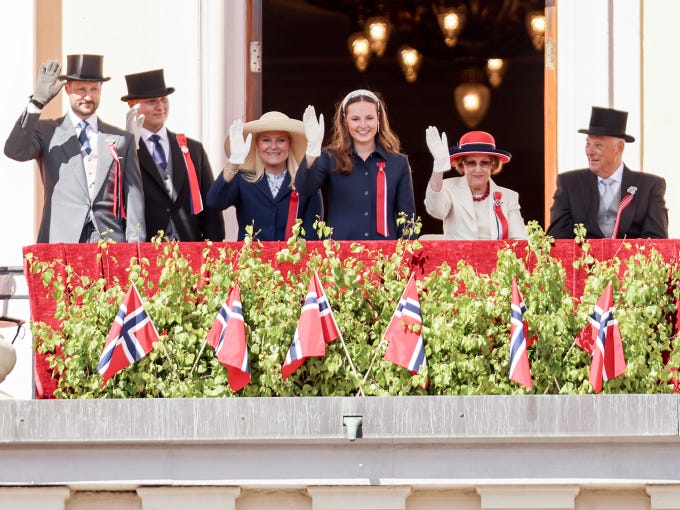
Legacy and Significance: A Tapestry of Honor and Unity
Norway’s orders and medals are a living tradition that weaves together the kingdom’s past and present. From the Order of Saint Olav’s roots in Norway’s Christianization to the Order of Merit’s global outreach, these honors reflect the monarchy’s evolution, as traced in the first two articles. They celebrate individuals who embody the values of justice, truth, and service, from community volunteers to international diplomats.
In a nation that cherishes humility, as exemplified by King Olav V’s tram ride and King Harald V’s inclusive speeches, these honors are bestowed with restraint and purpose. Public ceremonies, media announcements, and royal audiences amplify their impact, rooting them in Norway’s collective consciousness.
As Norway navigates the challenges of a diverse, modern society, as discussed in the second article, its honors system remains a vital link to its heritage. The careful balance of tradition and adaptability—seen in Harald V’s support for his children’s unconventional choices—ensures that these decorations remain relevant. They inspire future generations, fostering a legacy of excellence that echoes Norway’s journey from Viking kings to a progressive, peaceful nation.
In celebrating individual contributions, Norway’s orders and medals strengthen its collective identity, a thread connecting the saga-laden days of Harald Fairhair to the forward-looking reign of King Harald V. As the monarchy prepares for Crown Prince Haakon and Princess Ingrid Alexandra to carry this legacy forward, these honors will continue to shine, embodying the kingdom’s enduring commitment to service, unity, and national pride.





